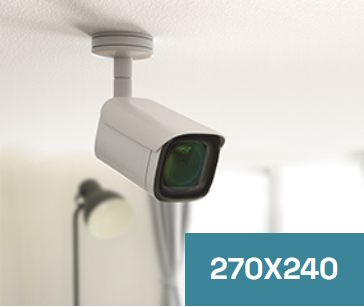Maximizing Retail Protection: A Deep Dive into Store Security Systems
In today’s fast-paced retail environment, ensuring the safety of merchandise, staff, and customers is more critical than ever. With theft, vandalism, and other security threats on the rise, robust store security systems are no longer optional, they’re essential. Modern security solutions now go far beyond simple locks and alarms, incorporating advanced technologies like CCTV monitoring and video analytics to offer retailers greater control and insight into daily operations.
Why Store Security Systems Matter
Retail shrinkage, losses due to theft, fraud, or human error, continues to be a multibillion-dollar issue worldwide. Store owners, whether running a boutique or a big-box chain, face challenges from both internal and external threats. This is where a comprehensive store security system becomes indispensable.
Effective store security systems do more than just deter criminal activity. They help build trust among customers, improve employee accountability, and provide real-time data that can lead to better decision-making. In an increasingly data-driven world, security infrastructure is becoming a core part of retail strategy.
Core Components of Store Security Systems
Modern store security systems are multi-layered and customizable to suit different business sizes and needs. Here are the primary components every retailer should consider:
1. CCTV Monitoring
At the heart of most store security systems is CCTV monitoring. Surveillance cameras provide a visual deterrent to theft and help store owners monitor real-time activity within the store. Strategically placed cameras can cover blind spots, entrances, exits, stockrooms, and cash registers.
High-definition and cloud-enabled CCTV systems now allow footage to be viewed remotely, giving owners peace of mind whether they’re on-site or away. Many setups also support mobile notifications and automatic alerts when suspicious activity is detected.
2. Video Analytics
CCTV cameras become exponentially more powerful when combined with video analytics. This technology uses AI to interpret video footage in real time, identifying unusual behavior such as loitering, crowd gathering, or sudden movements.
For store owners, video analytics can reduce the workload on security staff by automating surveillance tasks. It also helps in identifying patterns, such as high-traffic areas or peak shopping hours, that can be used to optimize store layout and staffing. In essence, it transforms raw video into actionable insights.
3. Access Control Systems
Limiting and monitoring who enters restricted areas is crucial, especially in larger retail settings. Access control systems, including keycards, biometric scanners, and coded entry points, can prevent unauthorized access and ensure only trusted personnel handle sensitive operations.
4. Intrusion Detection Systems
Intrusion sensors placed on doors, windows, and other entry points are vital for after-hours protection. These systems can alert law enforcement or store managers when a break-in is attempted, ensuring swift action to prevent or minimize losses.
The Power of Integration
The most effective store security systems are those that integrate seamlessly. CCTV monitoring, video analytics, access control, and intrusion detection should all work together as a cohesive ecosystem. Integration allows centralized control, faster response times, and better data analysis.
For example, if video analytics detect loitering in a high-risk area, the system could automatically adjust lighting or alert a security team. Similarly, footage from CCTV monitoring can be linked with access control logs to verify employee movement during an incident.
Benefits Beyond Theft Prevention
While loss prevention is the primary goal, store security systems offer several other benefits:
- Customer Confidence: A secure environment encourages shoppers to stay longer and return often.
- Employee Safety: Knowing that surveillance and safety protocols are in place improves staff morale and reduces workplace incidents.
- Operational Insights: Security data can reveal inefficiencies or training needs, leading to smoother operations.
- Legal Protection: In the case of disputes or incidents, video evidence can be invaluable.
Choosing the Right System for Your Store
Not all store security systems are created equal. It’s essential to assess the unique needs of your retail space, foot traffic, store layout, inventory value, and potential risk areas. A small boutique might only require a few strategically placed cameras and motion detectors, while a larger department store could benefit from a more advanced system with AI-driven video analytics and 24/7 CCTV monitoring.
Scalability is another key consideration. As your business grows, your security infrastructure should be able to grow with it, adding more cameras, integrating with new technologies, and adapting to changing threats.
Final Thoughts
Security is no longer a back-office function; it’s a business enabler. Modern store security systems are smarter, more accessible, and more powerful than ever. By leveraging tools like CCTV monitoring and video analytics, retailers can not only protect their assets but also create better, safer experiences for their customers and teams.
At the end of the day, investing in a robust security solution is investing in your brand’s reputation and long-term success.
Looking to upgrade your store security systems?
SPgS offers cutting-edge solutions tailored for retail environments, combining intelligent CCTV monitoring, AI-driven video analytics, and expert consultation to ensure you stay one step ahead of security threats. Contact SPgS today to secure what matters most.



